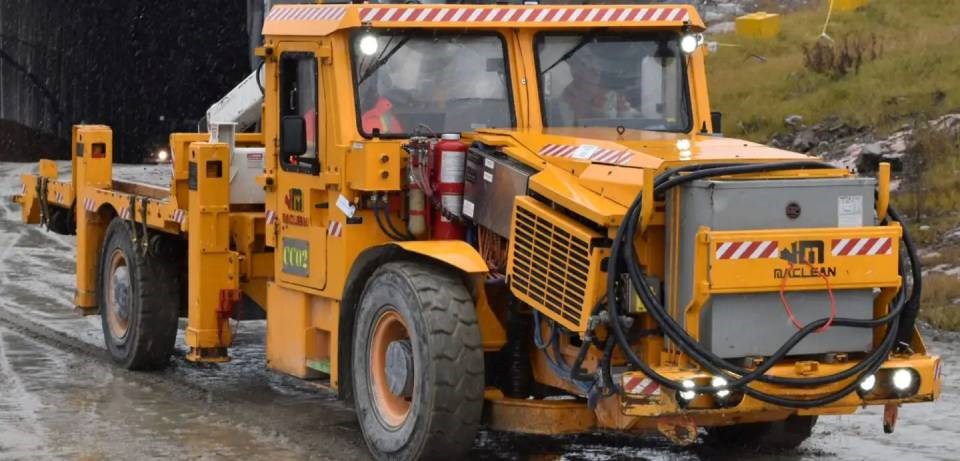As technology in the mining industry advances at an accelerated rate, there’s a huge need for workers who are trained in maintaining battery electric vehicles (BEVs).
But in transitioning their fleets from diesel to BEVs, companies must be mindful of doing it safely and strategically, noted Brandon Vance, who provides advisory services for NORCAT in Sudbury.
“The market for BEVs within the mining sector is increasing rapidly; now that it’s a proven technology, it’s leading to a lot of companies accelerating its adoption,” said Vance during a Feb. 9 Battery Electric Vehicle Safety in Mines conference hosted by Workplace Safety North in Sudbury.
“This is something that we can’t rush; it’s something that can’t be forced. There has to be a good plan in place in order to properly implement these in order to be successful.”
A big part of that plan is adequately training workers, and it will require co-operation from education partners, training facilities, and the industry, Vance said.
Because BEVs are still relatively new to mining, there’s a lack of experience among trainers and an absence of training standards, which compounds the problem, he noted.
Any new training in BEV maintenance has to take into consideration two sets of students: workers trained in heavy-duty equipment maintenance who are learning to adapt to battery electric technology, and new students who are learning about industrial vehicle maintenance for the first time.
Vance pointed to a course offered by Cambrian College in Sudbury — the Industrial Battery Electric Vehicle Maintenance certificate program — that satisfies both.
“It’s not only for new, prospective mechanics and technicians and typical college students, but they’re providing opportunities for the workforce to come in and upskill and relearn these new technologies,” Vance said.
Any training a company offers to its workers should also be tailored to the specifications outlined by the manufacturer, he added, because “there are going to be differences amongst manufacturers and amongst different models.”
In retraining the existing workforce, workers have to learn about the dangers associated with battery use — things like fire, electric shock, arc flash, and charging systems — dangers that come with their own terminology that they didn’t have to worry about with diesel-operated machinery.
Even if you’re not an operator or maintenance person, Vance suggested that anyone working underground should receive a general course on BEVs, since they introduce new challenges and dangers to a mine.
BEVs operate more quietly, for example, and this could create a higher risk for incidents in which workers could be struck by a vehicle, he noted. That may require that the company develop new communications protocols for everyone underground.
“I think a BEV awareness course is going to be critical to anybody that’s going to be working underground as you shift towards this being more prevalent in modern times,” he said.
On the other hand, new workers are starting from “ground zero,” because they’re learning procedures and protocols for the first time, he added.
Vance believes this is an excellent opportunity to introduce BEV education into the common core training that mine workers are required to have completed before going underground.
NORCAT currently offers a five-week common core program in which students learn basic underground mining modules, along with a specialty module in the operation of load-haul-dump (LHD) vehicles, Vance said.
The training organization will be acquiring a battery-electric LHD shortly, and Vance said NORCAT is currently working to incorporate it into the training.
“Right now, the workers are spending about three days on a scoop and learning how to operate a diesel LHD,” he said. “We’re looking now at getting our curriculum to integrate the BEV education.”
That might include going over a pre-operation checklist, defects or malfunctions, various potential hazards, an overview of machine components, emergency procedures, and shutdown and charging procedures.
Eventually, Vance said, he’d like to see the organization develop an introductory BEV course that would give a general overview of BEVs, how they function, and potential hazards.
“We’re hoping in the future to get a number of battery electric equipment and maybe then get a good sense of how to operate anything that has an electric battery.”



